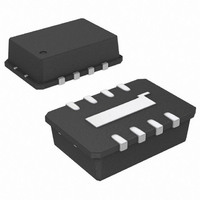AD8317ACPZ-R7 Analog Devices Inc, AD8317ACPZ-R7 Datasheet - Page 10

AD8317ACPZ-R7
Manufacturer Part Number
AD8317ACPZ-R7
Description
IC AMP LOG DETECT 8GHZ 8-LFCSP
Manufacturer
Analog Devices Inc
Type
Logarithmic Amplifierr
Datasheet
1.AD8317ACPZ-R7.pdf
(20 pages)
Specifications of AD8317ACPZ-R7
Applications
Receiver Signal Strength Indication (RSSI)
Mounting Type
Surface Mount
Package / Case
8-LFCSP
No. Of Amplifiers
1
Dynamic Range, Decades
55
Response Time
20ns
Supply Voltage Range
3V To 5.5V
Amplifier Case Style
LFCSP
No. Of Pins
8
Supply Current
22mA
Lead Free Status / RoHS Status
Lead free / RoHS Compliant
Other names
AD8317ACPZ-R7TR
AD8317
THEORY OF OPERATION
The AD8317 is a 6-stage demodulating logarithmic amplifier,
specifically designed for use in RF measurement and power
control applications at frequencies up to 10 GHz. A block
diagram is shown in Figure 21. Sharing much of its design
with the AD8318 logarithmic detector/controller, the AD8317
maintains tight intercept variability vs. temperature over a 50 dB
range. Additional enhancements over the AD8318, such as a
reduced RF burst response time of 6 ns to 10 ns, 22 mA supply
current, and board space requirements of only 2 mm × 3 mm,
add to the low cost and high performance benefits of the AD8317.
A fully differential design, using a proprietary, high speed SiGe
process, extends high frequency performance. Input INHI receives
the signal with a low frequency impedance of nominally 500 Ω
in parallel with 0.7 pF. The maximum input with ±1 dB log-
conformance error is typically 0 dBm (re: 50 Ω). The noise
spectral density referred to the input is 1.15 nV/√Hz, which is
equivalent to a voltage of 118 μV rms in a 10.5 GHz bandwidth
or a noise power of −66 dBm (re: 50 Ω). This noise spectral
density sets the lower limit of the dynamic range. However,
the low end accuracy of the AD8317 is enhanced by specially
shaping the demodulating transfer characteristic to partially
INLO
INHI
DET
DET
Figure 21. Block Diagram
GAIN
BIAS
VPOS
DET
SLOPE
COMM
DET
TADJ
V
I
V
I
VSET
VOUT
CLPF
Rev. B | Page 10 of 20
compensate for errors due to internal noise. The common pin,
COMM, provides a quality low impedance connection to the
printed circuit board (PCB) ground. The package paddle, which
is internally connected to the COMM pin, should also be grounded
to the PCB to reduce thermal impedance from the die to the PCB.
The logarithmic function is approximated in a piecewise fashion
by six cascaded gain stages. (For a more comprehensive expla-
nation of the logarithm approximation, see the
sheet.) The cells have a nominal voltage gain of 9 dB each and a
3 dB bandwidth of 10.5 GHz. Using precision biasing, the gain
is stabilized over temperature and supply variations. The overall
dc gain is high, due to the cascaded nature of the gain stages. An
offset compensation loop is included to correct for offsets
within the cascaded cells. At the output of each of the gain
stages, a square-law detector cell is used to rectify the signal.
The RF signal voltages are converted to a fluctuating differential
current having an average value that increases with signal level.
Along with the six gain stages and detector cells, an additional
detector is included at the input of the AD8317, providing a
50 dB dynamic range in total. After the detector currents are
summed and filtered, the following function is formed at the
summing node:
where:
I
V
V
the output voltage would be 0 V, if it were capable of going to 0 V).
D
IN
INTERCEPT
is the internally set detector current.
is the input signal voltage.
I
D
× log
is the intercept voltage (that is, when V
10
(V
IN
/V
INTERCEPT
)
AD8307
IN
= V
INTERCEPT
data
(1)
,














